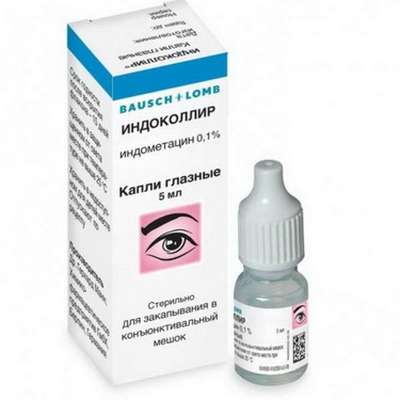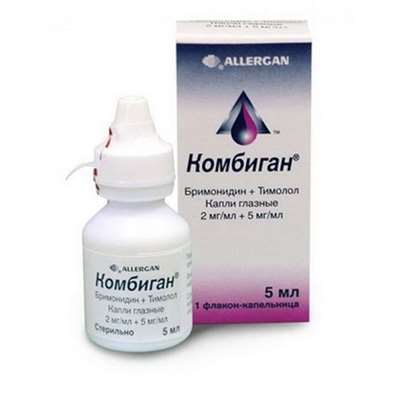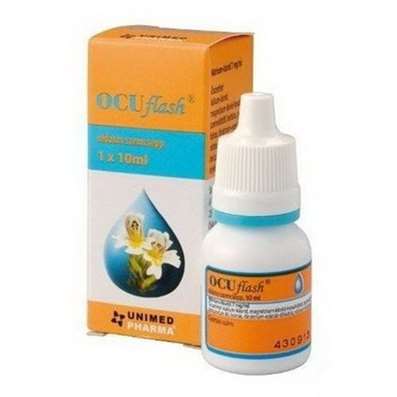Instruction for use: Mirlox
I want this, give me price
Active substance Meloxicam
ņ“’ M01AC06 Meloxicam
Pharmacological group
NSAIDs - Oxicams
Nosological classification (ICD-10)
M06.9 Other specified rheumatoid arthritis
Rheumatoid arthritis,Pain syndrome in rheumatic diseases, Pain in rheumatoid arthritis, Inflammation in rheumatoid arthritis, Degenerative forms of rheumatoid arthritis, Children's rheumatoid arthritis, Exacerbation of rheumatoid arthritis, Acute articular rheumatism, Rheumatic arthritis, Rheumatic polyarthritis, Rheumatoid arthritis, Rheumatic polyarthritis, Rheumatoid arthritis, Rheumatoid arthritis of active course, Rheumatoid arthritis, Rheumatoid polyarthritis, Acute rheumatoid arthritis, Acute rheumatism
M19.9 Arthrosis, unspecified
Change in brush with osteoarthritis, Osteoarthritis, Osteoarthrosis, Arthrosis of large joints, Pain syndrome in osteoarthritis, Pain syndrome in acute inflammatory diseases of the musculoskeletal system, Pain syndrome in chronic inflammatory diseases of the musculoskeletal system, Deforming arthrosis, Deforming osteoarthritis, Deforming osteoarthritis of joints, Osteoarthritis in the acute stage, Osteoarthritis of large joints, Acute pain syndrome with osteoarthritis, Post-traumatic osteoarthritis, Rheumatic osteoarthritis, Spondylarthrosis, Chronic osteoarthritis
M25 Other joint damage, not elsewhere classified
Restoration of joint tissues Degenerative diseases of joints, Degenerative joint damage, Chronic degenerative joint diseases, Chronic joint diseases, Chronic degenerative joint disease
M45 Ankylosing spondylitis
Ankylosing spondylarthrosis, Marie-Strumpel disease, Ankylosing spondylitis, Pain syndrome in acute inflammatory diseases of the musculoskeletal system, Pain syndrome in chronic inflammatory diseases of the musculoskeletal system, Bechterew's disease, Ankylosing spondylitis, Diseases of the spinal column, Rheumatic spondylitis, Bechterew-Marie-Strumpel disease
Composition and form of release
Tablets 1 table.
meloxicam 7.5 mg/15 mg
auxiliary substances: lactose; corn starch; sodium citrate; maltodextrin; crospovidone micronized; magnesium stearate
in a blistere of 20 pcs .; in a pack of cardboard 1 blister (7.5 mg) or in a blister 10 pcs .; in a pack of cardboard 1 or 2 blisters (15 mg).
Description of dosage form
Round, flat pills of light yellow color with a risk for division on one side.
pharmachologic effect
Pharmacological action - anti-inflammatory, antipyretic, analgesic.
Pharmacodynamics
The anti-inflammatory effect of meloxicam is associated with inhibition of the enzymatic activity of COX-2, which participates in the biosynthesis of PG in the inflammatory region. To a lesser extent, meloxicam acts on COX-1, which participates in the synthesis of PG, which protects the mucous membrane of the gastrointestinal tract and takes part in the regulation of blood flow in the kidneys.
Pharmacokinetics
When ingestion is well absorbed in the digestive tract, the absolute bioavailability of meloxicam is 89%. Simultaneous food intake does not affect suction. When using the drug inside at doses of 7.5 or 15 mg, its concentrations are proportional to the doses. Equilibrium concentrations are achieved within 3-5 days. Binding to plasma proteins is more than 99%. The range of differences between Cmax and Cmin of the drug at its once-a-day admission is relatively small and amounts to using a dose of 7.5 mg to 0.4-1 μg / ml; 15 mg is 0.8-2 μg / ml.
It penetrates through the histogematic barriers, the concentration in the synovial fluid is 50% Cmax.
Almost completely metabolized in the liver with the formation of 4 pharmacologically inactive derivatives. The main metabolite, 5'-carboxymeloxicam (60% of the dose value), is formed by oxidation of the intermediate metabolite, 5'-hydroxymethylmeloxicam, which is also excreted, but to a lesser degree (9% of the dose value). In vitro studies have shown that CYP 2C9 plays an important role in this metabolic transformation, the CYP 3A4 isoenzyme plays an additional role. In the formation of 2 other metabolites (which constitute, respectively, 16 and 4% of the dose value), peroxidase takes part, the activity of which, probably, varies individually.
It is excreted equally with feces and urine, mainly in the form of metabolites. With feces, less than 5% of the daily dose is excreted unchanged. In urine, in an unchanged form, the drug is found only in trace amounts. T1 / 2 meloxicam is 15-20 hours. Plasma Cl is an average of 8 ml / min. In elderly people, the clearance of the drug is reduced.
The volume of distribution is low, an average of 11 liters.
Hepatic and renal failure of moderate severity does not significantly affect the pharmacokinetics of the drug.
Indications
Symptomatic treatment:
osteoarthritis;
rheumatoid arthritis;
ankylosing spondylitis (Bechterew's disease).
Contraindications
hypersensitivity;
aspirin bronchial asthma;
exacerbation of peptic ulcer of the stomach and duodenum;
severe renal failure (if hemodialysis is not performed);
severe hepatic impairment;
pregnancy;
the period of breastfeeding;
children's age till 15 years.
Carefully:
erosive and ulcerative lesions of the gastrointestinal tract in anamnesis;
patients of advanced age.
pregnancy and lactation
Contraindicated in pregnancy. For the duration of treatment, breastfeeding should be discontinued.
Side effects
On the part of the digestive tract (gastrointestinal tract): nausea, vomiting, abdominal pain, diarrhea, constipation, flatulence, erosive and ulcerative lesions of the gastrointestinal tract, perforation of the stomach or intestine, gastrointestinal bleeding (latent or apparent), increased activity of hepatic enzymes , hepatitis, colitis, stomatitis, dry mouth, esophagitis.
From the cardiovascular system: tachycardia, increased blood pressure, a sensation of tides of blood to the face.
From the respiratory system: exacerbation of the course of asthma, cough.
From the central nervous system (central nervous system): headache, dizziness, tinnitus, disorientation, confusion of thoughts, sleep disturbance.
On the part of the genitourinary system: edema, interstitial nephritis, renal medullary necrosis, urinary infection, proteinuria, hematuria, renal insufficiency.
On the part of the organs of vision: conjunctivitis, blurred vision.
On the part of the skin: itching, skin rash, urticaria, multi-form exudative erythema (including Stevens-Johnson syndrome), toxic epidermal necrolysis (Lyell's syndrome), increased photosensitivity.
On the part of the hematopoiesis system: anemia, leukopenia, thrombocytopenia.
Allergic reactions: anaphylactoid reactions (including anaphylactoid shock), swelling of the lips and tongue, allergic vasculitis.
Other: fever.
Interaction
With simultaneous use with acetylsalicylic acid and other NSAIDs, the risk of erosive and ulcerative lesions and bleeding of the gastrointestinal tract increases.
When used simultaneously with antihypertensive drugs, the effectiveness of the latter may be reduced.
With simultaneous use with lithium preparations, lithium cumulation and its toxic effect can be developed (control of lithium concentration in the blood is recommended).
Simultaneous use with methotrexate increases the side effect of the latter on the hematopoietic system (there is a risk of anemia and leukopenia, periodic monitoring of the general blood test is necessary).
Joint use with diuretics and cyclosporine leads to an increased risk of developing renal failure.
With simultaneous use with intrauterine contraceptives, the effectiveness of the latter may be reduced.
With simultaneous use with anticoagulants (heparin, ticlopidine, warfarin), as well as with thrombolytic drugs (streptokinase, fibrinolysin), the risk of bleeding increases (blood coagulability indices should be periodically monitored).
Simultaneous use with colestyramine increases the excretion of meloxicam through the digestive tract (as a result of binding meloxicam).
Dosing and Administration
Inside, with food, once a day.
Rheumatoid arthritis - 15 mg / day. Depending on the therapeutic effect, the dose can be reduced to 7.5 mg.
Osteoarthritis - 7.5 mg / day. If the dose is ineffective, it can be increased to 15 mg / day.
Ankylosing spondylitis - 15 mg / day. The maximum daily dose is no more than 15 mg.
In patients with an increased risk of side effects, as well as patients with severe renal failure who are on hemodialysis, the dose should not exceed 7.5 mg / day.
Overdose
Symptoms: impaired consciousness, nausea, vomiting, epigastric pain, gastrointestinal bleeding, acute renal failure, hepatic insufficiency, respiratory arrest, asystole.
Treatment: gastric lavage, the appointment of activated charcoal (within the next hour), symptomatic therapy. Kolestyramin accelerates the removal of the drug from the body. There is no specific antidote. Forced diuresis, alkalization of urine, hemodialysis are ineffective because of the high degree of binding to blood proteins.
Precautionary measures
When prescribing the drug to patients with peptic ulcer of the stomach or duodenum in history, patients who are on anticoagulant therapy should be careful (possibly the development of ulcerative and erosive diseases of the gastrointestinal tract).
Patients with advanced heart failure, patients with chronic heart failure and circulatory failure, with cirrhosis of the liver, with hypovolemia as a result of surgical procedures should be careful when using the drug and regularly monitor the indicators of kidney function.
Patients with renal insufficiency and Cl creatinine> 25 mL / min dose adjustment are not required.
When using the drug with diuretics at the same time, you must take a sufficient amount of fluid.
If allergic reactions occur (itching, skin rash, hives, photosensitivity), stop taking the drug.
With caution apply during work drivers of vehicles and people whose profession is associated with increased concentration of attention (possibly the development of headache, dizziness, drowsiness).
Storage conditions
In a dry, the dark place at a temperature of no higher than 25 į C.
Keep out of the reach of children.
Shelf life
2 years.
Do not use after the expiry date printed on the package.

 Cart
Cart





